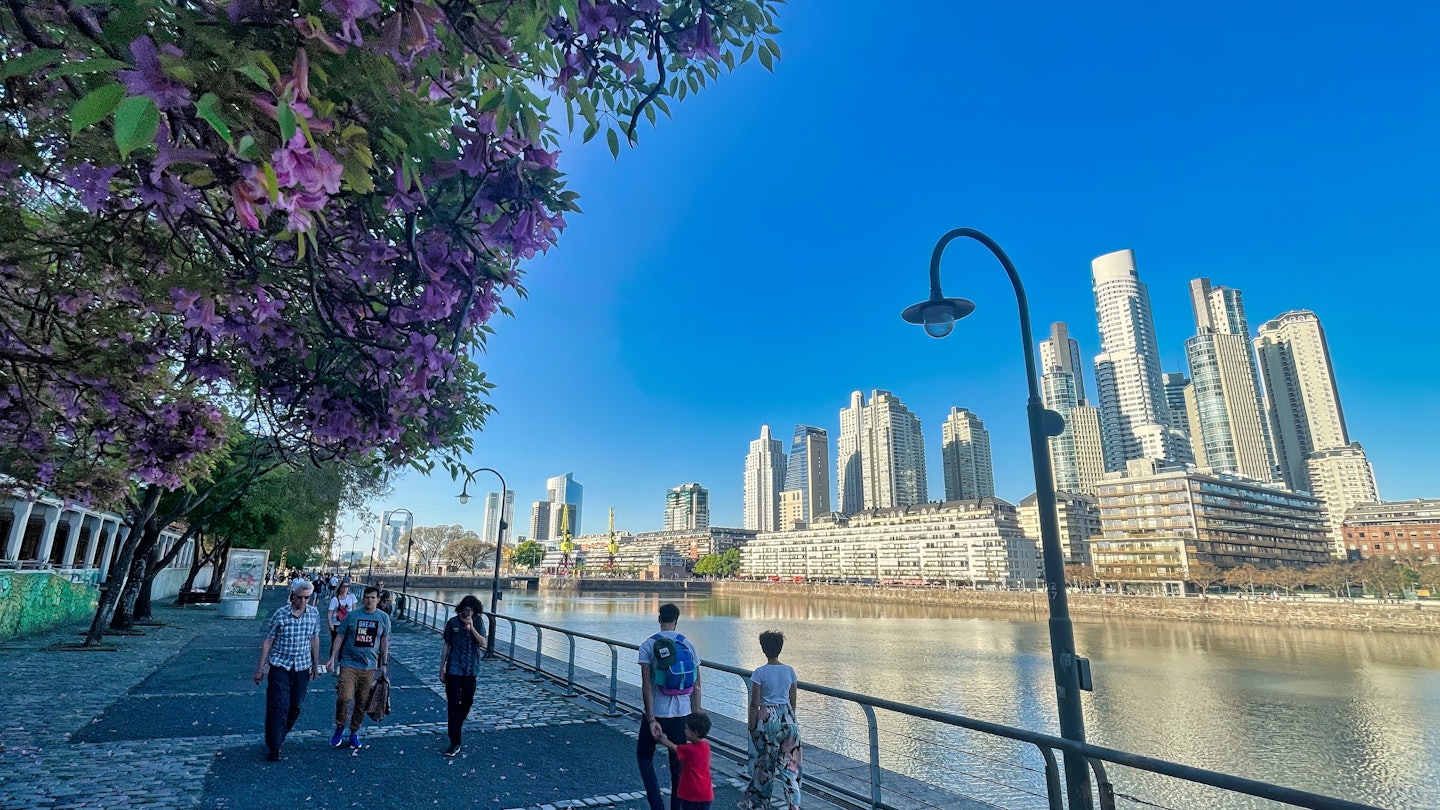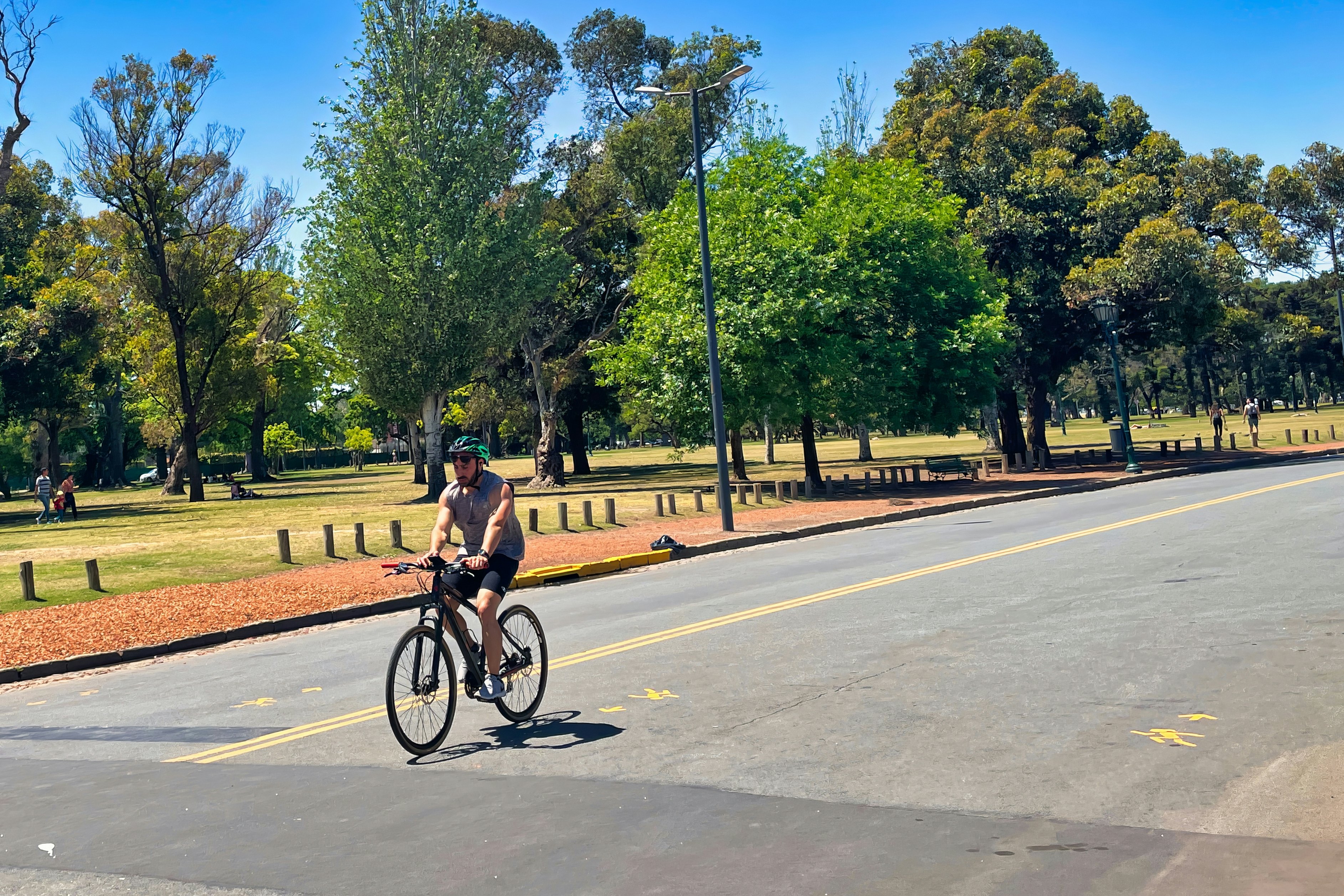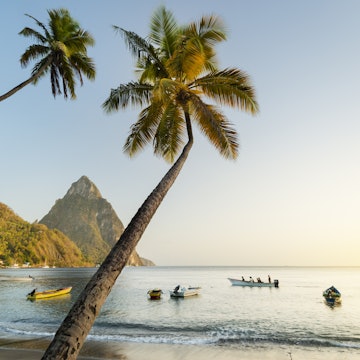

Buenos Aires, Argentina. oliverdelahaye/Shutterstock
Argentina is a big country. In fact, it’s a vast country with long distances to travel between its major tourist attractions.
Covering just more than 2.8 million sq km (1.1 million sq miles), Argentina is the second-largest country in Latin America and the eighth-largest country globally. And while the country covers a lot of land, there are only 46 million people living there, also making it sparsely populated for its size.
Use this guide to help you get around this beautiful country – via land, air or sea – on your next trip to Argentina.

Buses are the best option for exploring every corner of the country
In Argentina, buses are called micros, and you can travel the whole country using medium- and long-distance services.
In terms of comfort, there are several kinds of buses, especially those traveling long-distance routes. Some have partially reclining seats (sold as semi cama), reclining seats (cama) and luxury seats (cama ejecutivo or suite). The latter offers a hot meal service on board.
All long-distance buses have restrooms, reclining seats and air conditioning (sometimes they overdo it, so bring a coat). Some companies even have on-board Wi-Fi and USB ports, although you can't rely on them enough to schedule a business meeting.
If traveling from Buenos Aires, make sure all your belongings are secure before arriving at the Retiro bus terminal, where you should be vigilant of your personal effects (especially your cellphone).
Renting a car is expensive, but it helps you explore new roads
Renting a car in Argentina is more expensive than in Europe or North America. However, exploring new roads beyond the touristy attractions makes up for that extra cost.
It is also an excellent way to visit smaller towns in the northwest, such as Salta, Jujuy and Patagonia, which are marred by infrequent bus services.
When renting a car, opt for the unlimited mileage option. Basic third-party protection insurance is part of the car rental agreement. If you're traveling to a neighboring country, double-check that the rental agreement covers it. National roads are generally in good condition, though rural roads tend to be unpaved and riddled with potholes.

Meet your new travel partner
Get unlimited data while you travel with Holafly eSIM. Peace of mind and no hidden fees wherever you go.

Trains are an excellent way to see the scenery without rushing
Argentina's railway network became one of the most extensive in the world and an example for Latin America. In the 1990s, the networks were dismantled and privatized.
Many intercity train services did not continue, and the service deteriorated. However, some popular cities such as Mar del Plata, Córdoba, Rosario and Tucumán, can still be reached by train.
Service is much slower and less frequent than the bus, but it's cheaper. In some parts of the country, trains offer incredible panoramic views, such as El Tren del Fin del Mundo (Train to the End of the World) in Ushuaia, Tren Ecológico de la Selva (Rainforest Ecological Train) in Puerto Iguazú and Tren a las Nubes (Train to the Clouds) in Salta.
Airplanes have improved both their price and connectivity
Aerolíneas Argentinas is the foremost airline in the nation, serving a wide range of domestic, regional and international destinations.
In 2018, the government opened its doors to the entry of low-cost companies. JetSmart and Flybondi, the two lines that fly through Argentina, have been intensifying their competition for the domestic market. Prices have improved, and there are more flight options, mainly to tourist centers such as Bariloche, Puerto Iguazú and Mendoza.
Book your ticket in advance and it can be cheaper than a bus ticket. Flight prices skyrocket in December and January during the holidays when Argentines plan their summer vacations.
Take the ferry to Uruguay
There are few chances to travel by boat within Argentina. However, it’s an excellent way to quickly reach the cities of Colonia, Montevideo and Punta del Este in Uruguay.
Colonia Express and Buquebus are the two companies that offer the service. Regular services run along the channels of the Paraná Delta from Tigre. Sturla offers river excursions from Puerto Madero to visit the Río de la Plata and Tigre. If you want to get to Ushuaia by bus or car, you must cross Chile and take a ferry there to the Magellan Strait.

In Buenos Aires, the Subte (subway) is the fastest way to get around
Buenos Aires is the only city in the country with a subway network, with six lines and 56km (35 miles) of tracks.
You must purchase a SUBE card to use the subway, buses and suburban trains. Obtaining it is not easy, but subway stations and some kiosks typically sell it.
The enormous bus network is identified by numbers, as in other big cities such as Córdoba and Rosario. Some parts of Buenos Aires have an exclusive bus lane, which helps speed up the journey. It can be a bit confusing to find the stops at first.
Moovit and Mapa Interactivo de Buenos Aires are two apps that help you get to know the city without getting lost. Protect your cellphone and belongings from pickpockets at train stations, subway stations and bus stops.
In recent years, the number of cabs in Buenos Aires has decreased in the face of fierce app competition from Uber, Cabify and DiDi.

Cycling is a good option in some places
In 2009, Buenos Aires built a slew of bike lanes to promote cycling. Today, the city has more than 300km (186 miles) of bike lanes. It’s a fantastic means of transportation and the perfect way to get to know a flat and densely populated city. Ecobici is a bicycle-sharing system in Buenos Aires.
It has 340 stations and more than 3600 bicycles scattered throughout the neighborhoods. Foreigners only need a valid passport and an international credit card to download and use the app. The cities of Cordoba and Rosario have also extended their network of bicycle lanes and instituted a public bicycle system.
If you have an adventurous spirit, the multiday Seven Lakes Route is incredible by bike. It is 110km-long (68-miles) and links Villa La Angostura and San Martin de los Andes in Patagonia along lakes, mountains and forests.
Another good option is the Calchaquíes Valleys, a 300km (186-mile) route through northern Argentina (Salta, Tucumán and Catamarca), which features beautiful mountains, mud constructions and villages with indigenous heritage.
There isn't much accessible transportation in Argentina
There’s still a long way to go regarding accessibility in the country. In big cities, broken sidewalks and inaccessible buildings are commonplace. However, Buenos Aires is working to improve wheelchair ramps in hotels, bus stations and subway stations.
The National Parks administration, which includes some of the country's most-visited parks such as Iguazú, Los Glaciares and Nahuel Huapi, is doing an excellent job of accessibility with adapted chairs in wilderness areas, accessible trails, ramps and accessible infrastructure.
















